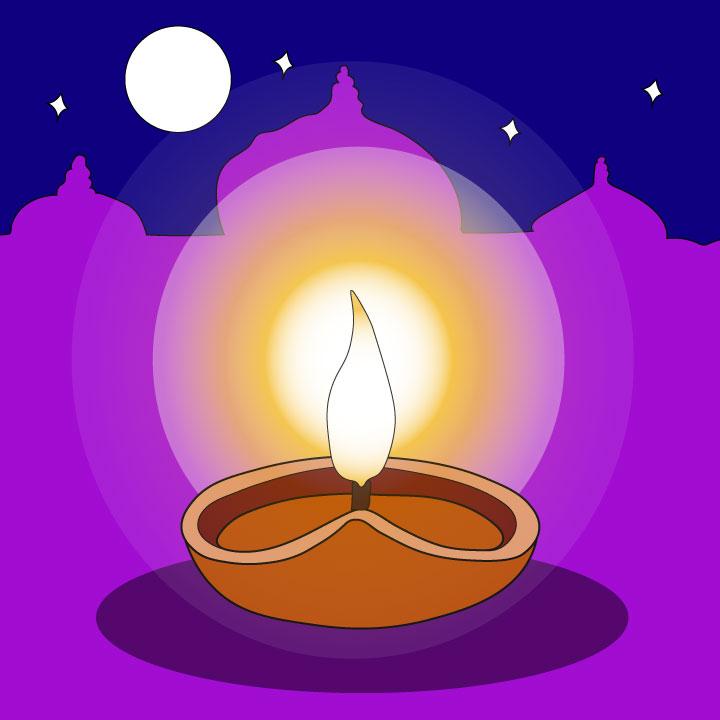By: Elle Grant
Over the course of mid-November, the annual five-day festival, Diwali, took place from November 12th to November 16th. Known as the festival of lights, for those who follow Hinduism, Jainism, Sikhism, major religions in South Asia, this is one of the most important religious festivals of the year. It lasts the aforementioned five days, from the 13th day of the dark half of the lunar month Ashvina to the second day of the light half of the lunar month Karttika. (the corresponding dates in the Gregorian calendar usually fall in late October and November).
Diwali as a festival has deep meaning within the communities it is celebrated. Its name comes from the Sanskrit term dipavali, meaning “row of lights.” In turn, the lighting of Diwali candles is an essential part of the celebration. The festival generally symbolizes the victory of light over darkness. In this context, light symbolizes knowledge and wisdom, while darkness is a symbol for all negative forces including wickedness, destruction, violence, lust, envy, injustice, greed, oppression and suffering. The third day of Diwali is celebrated on Saturday, November 14, 2020. While it is widely celebrated by a vast proportion of the world’s population, precisely how Diwali is celebrated varies by culture.
Across, South Asia, different regions celebrate different deities first and foremost with the festival. Among Hindus the most widespread custom is the lighting of diyas (small earthenware lamps filled with oil) on the night of the new moon to invite the presence of Lakshmi, the goddess of wealth. In Bengal the goddess Kali is worshipped with the event. In North India the festival additionally celebrates the royal homecoming of Rama to the city of Ayodhya after defeating Ravana, the 10-headed king of the demons, thus connecting the festival with the holiday of Dussehra. In South India the festival marks Krishna’s defeat of the demon Narakasura. The celebration of Diwali offers just a glimpse into how culture varies across South Asia.
Homes of those who celebrate reflect the importance of the day. Many begin the holiday with a deep cleaning of their home, from top to bottom. Floors inside and out are covered with rangoli, consisting of elaborate designs made of colored rice, sand, or flower petals. The doors and windows of houses are kept open in the hope that Lakshmi will find her way inside and bless the residents with wealth and success. Other ways Diwali is celebrated include visiting loved ones, exchanging gifts, wearing new clothes, feasting, feeding the poor, and setting off fireworks. Delicious food is a large part of the celebration. Yet how this holiday is specifically celebrated this year has been affected by the ongoing global pandemic caused by the spread of COVID-19.
Before Diwali even took place, experts warned of the danger of gathering for the event, in the vein of warnings being made for the coming holidays of Christmas and Hannukah for Christian and Jewish populations of the world. International lockdowns in places like Europe have put a damper on the plans of many. Yet many are finding ways around the restriction of movement and celebration; many are planning calls with families across different continents, in which there will be singing, games, and tasty foods shared through screens. Some say it has even brought them closer as a family.
Like many holidays, Diwali assuredly looks different this year. Yet the resilience displayed by those celebrating, to find a way to connect with family and friends during this special spiritual time, again reflects some of the best of human ingenuity during the coronavirus pandemic.






